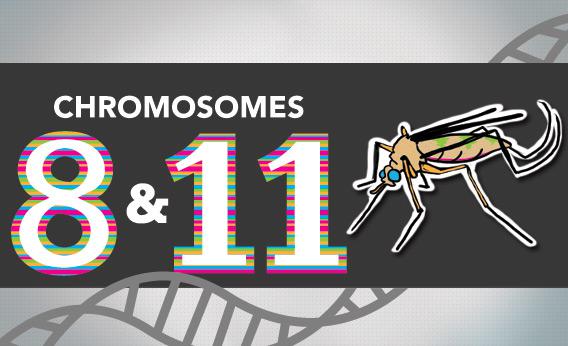One fundamental insight from the last few decades of genetics is that nature and nurture aren’t opposites—they’re complementary. That is, it’s often meaningless to talk about a genetic trait without also discussing the environment in which that trait appears. Sometimes, genes don’t work at all until the environment awakens them.
Take perfect pitch. Perfect pitch is the ability to hear the B-flat above middle-C, or the F-sharp at the top of the treble clef, or any other note, and name it instantly, even without a reference note. Plenty of studies have found a genetic component to perfect pitch (also called absolute pitch). And while there probably isn’t a single perfect pitch gene, a few scientists have located stretches of DNA, including two on chromosome 8, common in Europeans with absolute pitch.
Even a strong chromosome 8 doesn’t guarantee perfect pitch, though, and perfect pitch remains relatively rare among Europeans overall. By contrast, people who grew up speaking tonal languages, like Chinese, develop absolute pitch much more often. With tonal languages, changing the pitch of a word changes its meaning. So a high, squeaky “ma” can mean something different from a bass “ma,” and rising or falling pitches can change the meaning yet again. In other words, unlike with English, you can’t be utterly tone deaf and speak these languages well.
Still, even tonal language speakers can’t just expect to have perfect pitch—the environment sometimes needs to do more to turn this DNA on. Musical training before about age 6 probably plays a critical role, for instance. Overall, it seems that some (and perhaps all) people have a window to develop perfect pitch when they’re quite young. The size of that window might vary depending on their genes, but their linguistic or musical milieu must stamp the talent into their brains at some point. Otherwise, once the window shuts, neither a genetic predisposition nor hard work can pry it open again.
In some cases, genes and the environment do more than just interact—they evolve together. We know that genes shape human cultures and human societies: The DNA we inherited from our ancestors makes certain foods taste better, affects the way we care for children, influences what colors we find vibrant, and contributes to our love of socializing, among other examples. But there’s also good evidence that culture bends back and shapes human genes in turn. Genes and culture, in other words, can “co-evolve” and change in tandem.
One profound example of co-evolution involves chromosome 11. Thousands of years ago, various tribes in West Africa began clearing out the dense, ancient forests near their homes and cultivating plots to grow yams and other crops. Their strategy worked well—the yams thrived, becoming a dietary staple—but had an unintended side effect. The old forests had slurped up excess rain quite well; the bare farmland did a poorer job, and left standing pools of water that attracted hordes of mosquitoes.
Mosquitoes harbor diseases, especially malaria, which became endemic among Africans there, and the tribes had to come up with genetic defenses to survive. One mutation in particular seemed to help, an A→T swap on the hbb gene on chromosome 11. This mutation changed the shape of some red blood cells, making them less like a disc (the normal shape) and more like a crescent. This in turn helped prevent malaria, which parasitizes red blood cells, from getting a foothold. As a result, the mutated hbb gene began to spread in the region, following the clear-cutting yam farmers wherever they expanded.
Unfortunately, when the mutated, crescent-cell-producing gene became relatively common, people started having children with two copies of it. And while having one copy still provided resistance to malaria, having two copies proved deadly, since the crescent, or sickle-shaped, blood cells died off prematurely, and also jammed up inside small blood vessels. Today we call this condition sickle-cell anemia. The hbb mutation never would have wreaked such havoc among these tribes if not for the ancient decision to farm yams so intensely.
Cultural choices have expanded or contracted many other genetic traits as well. Different prehistoric diets (including the introduction of cooking) probably changed our teeth and jaw structures, farming starchy foods probably intensified the concentration of certain enzymes in our saliva that digest starch, and domesticating cattle and other milk-producing animals probably led to what by all rights should be called lactose tolerance (not lactose intolerance, since adults who can digest milk are the mutated weirdos). Many superficial human features, like eye color, also responded strongly to cultural cues about what different groups found attractive. In fact, modern civilization has curbed the ancient threats to our survival—exposure, droughts, starvation, predators, parasites—so well that culture probably shapes our genes as much or more than anything else nowadays.
